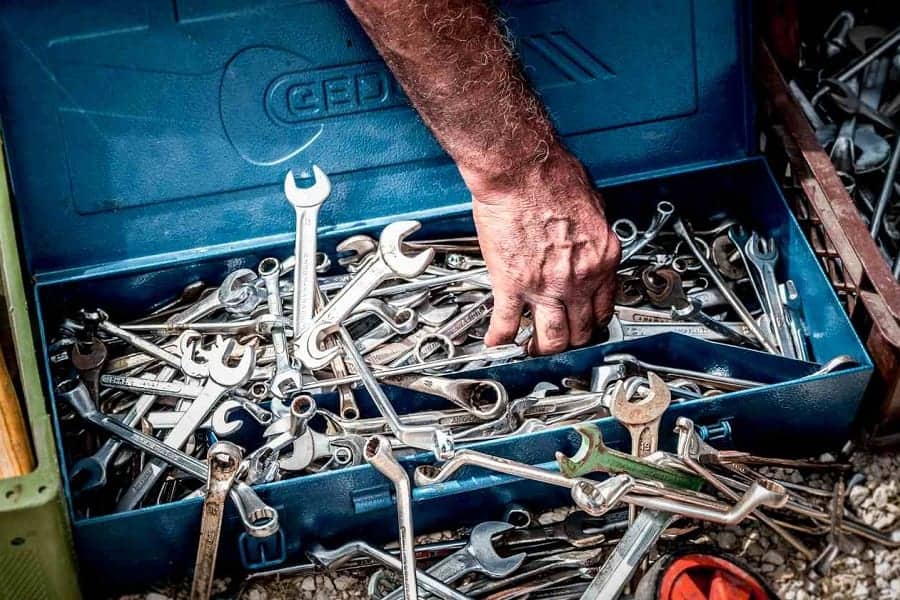While buying a knife may be easier than custom building your own, there are a few advantages to making your own knife.
Making your own knife will most likely be much cheaper than buying a brand new knife. If you use the right materials, you can save a lot of money.
A mass-produced knife on the market will also lack unique character. When you make your own knives, you can add personality to the creation and make it even more unique.
If you are interested in making your own knives but are not sure where to start, you have come to the right place.
This guide will cover the nine best scrap metals for knife-making enthusiasts.
By the end of this article, you will know what metal you should use and where to find it.
If you are ready to become a knife-making expert, let’s get started.
Suspension Springs
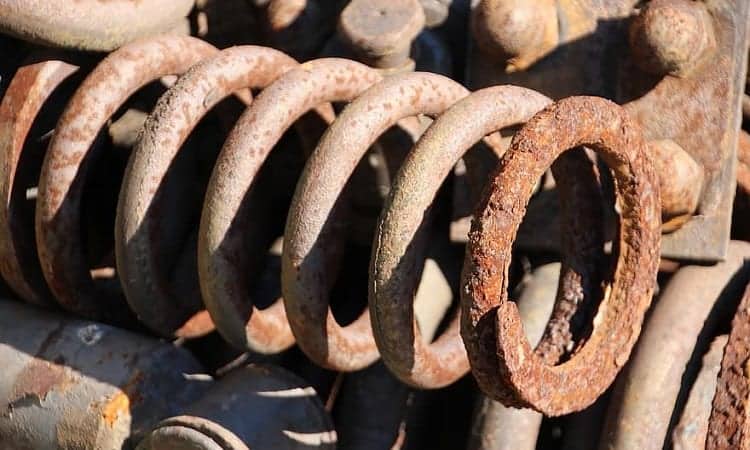
The first best scrap metal for knife making is suspension springs.
Suspension springs are pieces of coiled metal that are installed between the wheel and body of a vehicle.
Suspension springs can be made of a few different metals. The most popular metals that the springs are made from are steel, titanium, and bronze.
You can either break a piece off a suspension spring or uncoil the whole thing to use for a knife.
You can find suspension springs in many different places.
Since many vehicles and machinery use suspension springs, you will probably be able to find a few in your own garage or even a friend’s garage or workshop. However, the best place to look for suspension springs will be a junkyard or a suspension shop.
Tool Steels
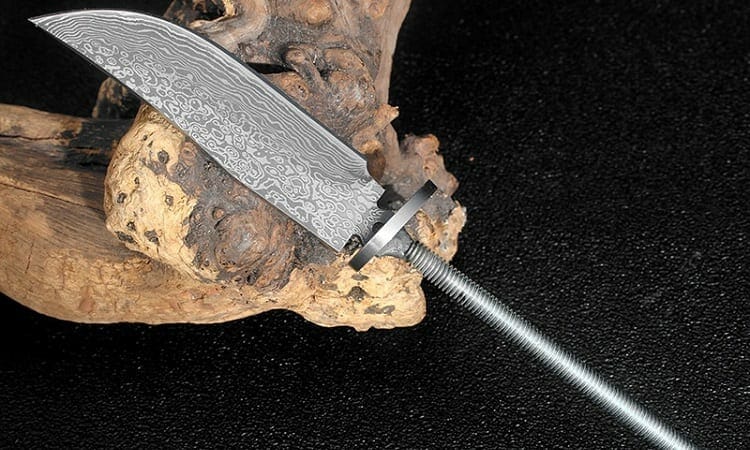
Many knife enthusiasts like to use tool steel for making knives.
Most tool steels are carbon steels with added alloys. These alloying elements enhance all of the carbon steel’s characteristics and increase its quality, making this steel great for knives.
Another great feature that tool steels have is that they typically have high corrosion resistance. While they will not be as resistant to corrosion as stainless steel, the metal will perform well.
If you are looking for tool steel that has high toughness, many experts recommend A2 steel. However, if you use A2 steel, you will need to take care of your knife to avoid potential rusting. It will also not be as hard as some other tool steels.
If you want high corrosion resistance, D2 metal will be a good option. D2 steel also has high edge retention, but it is not as tough.
Finally, M2 steel will retain a knife-edge well, but it will be a bit brittle.
There are a few places that you will find tool steel. The first place you can look is your local hardware store. However, keep in mind that they may not cut the steel for you if you find what you need.
Another great metal provider is Metal Supermarkets. This company sells a variety of metals and will cut the metal to your desired dimensions. There are currently over 70 Metal Supermarkets stores in the US.
Leaf Springs
If you are looking for the best scrap metal for knife making, leaf springs will be a great choice.
Leaf springs are a kind of suspension for vehicles. People love to use them for knife scrap metal because they are typically already in a flat, wide shape. Due to the shape, it is fairly easy to form the metal into a knife shape, making the whole process easier.
You can find leaf springs in old trucks at junkyards or even at hardware stores. You can also visit your local dump and search for old leaf springs.
Carbon Steel
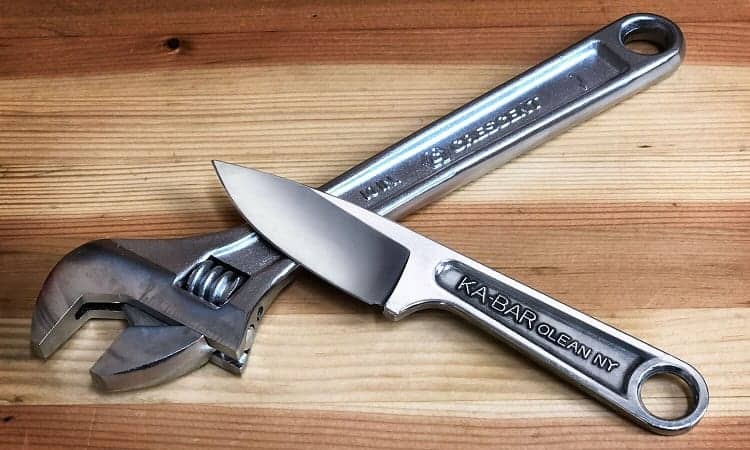
Carbon steel is also a popular metal that knife enthusiasts like to use.
This kind of metal will have high strength and hardness, two of the most desired characteristics for knives.
However, if you do not properly treat the metal, it will become too brittle and could lead to breakage. There is also a chance of the steel becoming too soft, depending on how you treat it. If the metal becomes too soft, it will not be able to hold a sharp edge properly.
Furthermore, there may be an increased risk of rusting with carbon steel knives. Carbon steel does not have many alloying agents to protect the metal from rusting. For this reason, you must take great care of carbon steel to prevent corrosion.
There are a few things you can do to take care of the blade. Always make sure to store the blade properly in the sheath when you are not using it. Avoid leaving it in moist or humid areas, and sharpen it regularly.
The most popular carbon steel grades that people use to make knives are C1090, C1075 and C1045.
There are a few places you can find carbon steel. First of all, it won’t be hard to find carbon steel in your local junkyard. You will be able to find carbon steel on many old cars.
If you have access to a lumberyard, you will also have a lot of luck there. Many lumberyards will throw away metals such as chainsaw blades, bearings and chains that are still usable. These will work well for making carbon steel knives.
Other places you can find carbon steel are recycling depots and metal depots.
Steel Cable
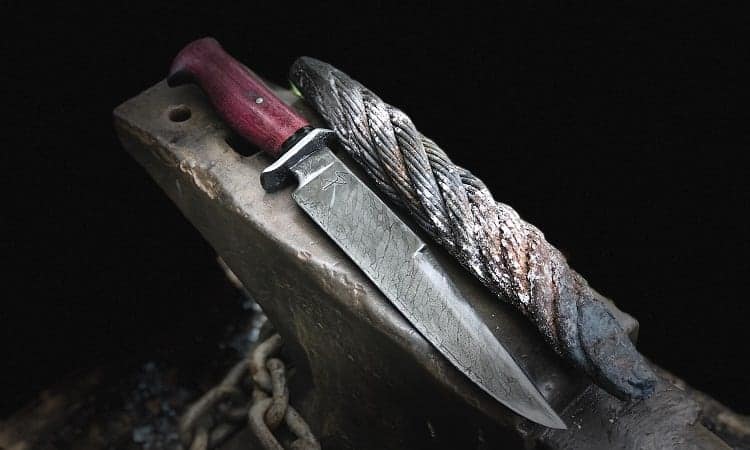
While this may be a bit more tricky to come across, steel cable works great as scrap metal for knives. Steel cable is simply braided steel.
If you come across one, all you will have to do is uncoil the cable and heat it to reform it. You will be able to make a few knives with steel cable.
Most steel cables will have a high concentration of carbon. The high carbon content will create strong and hard knives. If you create a knife from a steel cable, you will need to take good care of it to prevent rusting.
You may be able to find steel cable at construction sites or junkyards. If you are bent on creating a knife from a steel cable, you can also buy some at your local hardware store. However, if you are buying material, it will be easier to buy flat sheets of metal and build a knife from there.
Elevator cable also works great, but you may have to dig a bit deeper to find yourself one of these.
Stainless Steel
Stainless steel is the best scrap metal for knife-making enthusiasts.
The main reason why stainless steel is a great material is that it contains several alloys, including chromium. These alloys increase the metal’s corrosion resistance. Unlike with carbon steel, you won’t have to worry as much about the blade deteriorating with time.
Stainless steel blades will also have good edge retention.
Mostly all stainless steel knives are made from ferritic or martensitic grades. The best grades to use for knives will be 420 or 440.
Some people will also use austenitic 316-grade steel for knife making. However, this kind of steel is not as hard and will not retain an edge as well as the 420 or 440-grade steel.
If you are only concerned about corrosion resistance, you may want to use 304L grade stainless steel. Even so, try to avoid this grade if you can since the blade will be pretty weak.
You may also come across precipitation-hardening stainless steel metal. Precipitation-hardening steel has extremely high corrosion resistance. If you want to use this type of metal for making knives, pick up 17-7 PH grade steel.
Stainless steel won’t be hard to come by. You can find stainless steel at any hardware store or metal shop. You can also find stainless steel at junkyards or dump piles.
Steel Files
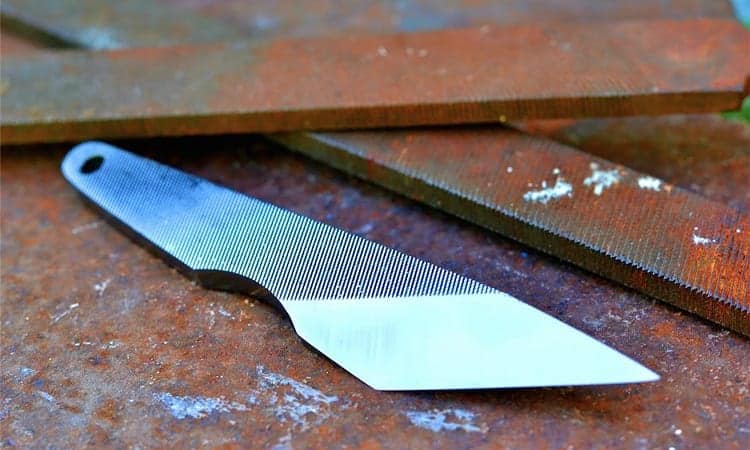
If you are a beginner to knife making, starting with steel files is a good idea.
The reason why steel files are great for beginners is that they make small knives. Even so, the blade will be incredibly sharp. It will also fit perfectly in your hand.
You may be wondering why steel files are so good for knife making since they are so hard. Generally, this would not be a good starting point for knife making. However, you can anneal the metal to soften it and shape it. After you shape it, you can then reharden it.
When you make a blade with a steel file, it will be durable, hard, and will hold an edge well.
Steel files are very easy to find. You will be able to find steel files at just about any hardware store. You can also order them online from Amazon or any metalworking supply shop.
Railroad Spikes
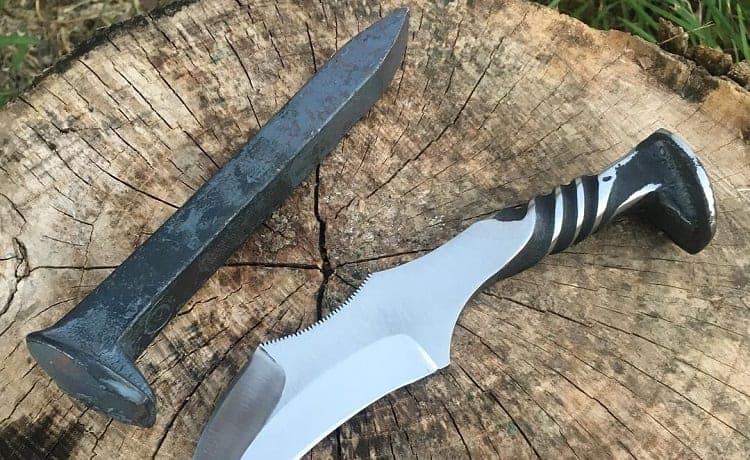
Got your hands on some railroad spikes? You may have found the best scrap metal for knife making.
Many knife enthusiasts love to use railroad spikes to make knives for a few reasons.
First of all, they are pretty easy to work with. The spike is already conveniently shaped and will not need a lot of further shaping. You can simply sharpen the end of the spike and flatten the body to produce a handy blade.
The spike is also the perfect size for a knife. Once you shape the blade, you can use the rest of the spike as a handle. You can then engrave it or carve a special design onto the knife.
Railroad spikes have high concentrations of carbon steel. If you want to be a strong blade, this will be the material for you.
Since the railroad spikes have to undergo a lot of impact and pressure from installation, they will be some of the toughest metal you can get your hands on. Railroad spikes will make blades that are highly durable, strong and hard. You will not be disappointed by the blade’s lifespan.
Even so, when a blade has a high carbon concentration, it usually means that the steel will be prone to rusting. So if you make a blade out of railroad spikes, you will need to take extra good care of it.
It won’t be too hard to come across railroad spikes. Take a few hours and visit your local junkyard; you will probably find one or two lying around.
You might also find luck if you check out your local dumpsters. While this may not be the most glamorous option, it will be a good source to check.
Saw Blades
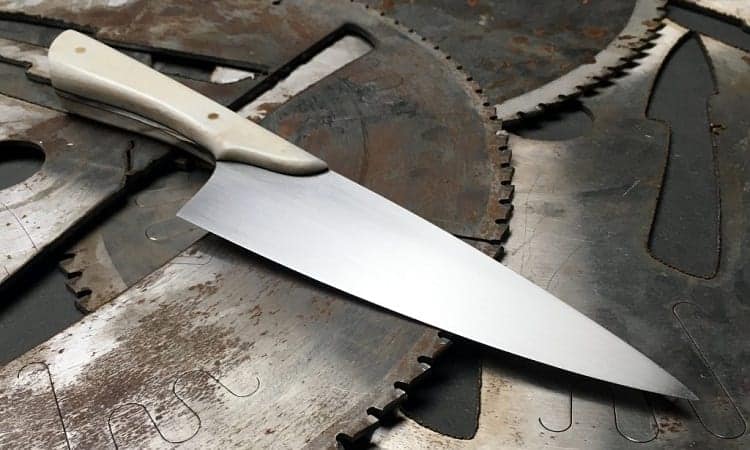
If you are looking for a fun experiment, pick up an old saw blade.
To make a knife from a saw blade, cut a piece from the blade and go from there. If you desire, you can cut some more pieces and make a few knives from a single saw blade.
It is important to avoid using new saw blades for making knives. Newer blades may be sharper, but they will not be as strong as older sawblades. If you use a new blade, it will not hold its shape well and will likely break sooner.
Older saw blades will create a hard, strong blade with great edge retention. While you may have to work with an older blade more, it will produce a much better product.
It won’t be too hard to find a saw blade.
You will probably find what you are looking for at your local junkyard or dumpsite. Another easy option is simply asking a couple of friends and seeing if they have old chainsaws they are not using.
Conclusion
We hope that this guide has helped you find the best scrap metal for knife making.
There are many great scrap metals to use.
If you want a knife with high strength and hardness, consider using carbon steel to craft a blade. However, you will need to take care of the blade to prevent it from rusting.
The best scrap metal overall will be stainless steel. Since this steel has several alloys, including chromium, it will create strong blades with high corrosion resistance. Stainless steel blades will also have good edge retention.
Something to keep in mind about making knives from scrap metal is the potential danger of the process. If you do not know where the metal has come from or what kind of metal it is, the metal could produce toxic fumes when you heat it.
To avoid this, try to find out where the metal came from in the first place and what kind of metal it is (whether it is galvanized or not, for instance).

